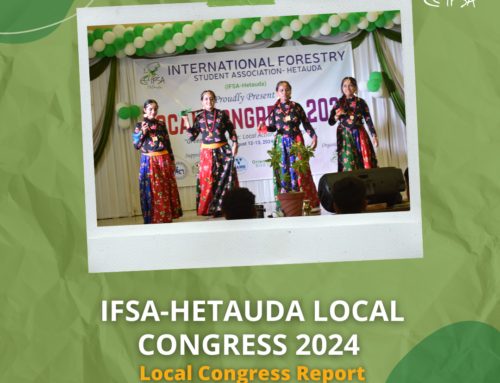
The future of forest biodiversity is bright in the hands of young people around the world who are committed to solve one wicked problem – forest and biodiversity loss.
I can still remember how excited I was the first time I saw a life Elephant in April 2019. In the midst of the excitement, I was wondering if my own children (yet unborn) would have access to these beautiful and magnificent creatures whose original home is the forest.
“Would they have access to the environmental, economic and sociocultural benefits from the forests, biodiversity and wildlife by the time they grow up to my current age?” was my concern.
I am well aware that biodiversity level has reduced significantly around the world in the past few years.
The United Nations have designated March 21 to highlight the importance of forests on a global level as International Day of Forests celebration. The theme for 2020 is “Forest and Biodiversity: Too Precious to lose”.
The Covid-19 pandemic makes physical celebration of the day in most countries of the world impossible but the zeal and motivation of young people was not under lockdown.The largest network of forestry students in the world, the International Forestry Students Association seized the moment to organise a webinar to commemorate the day on the theme – ” Where lies the future of forest biodiversity?” with guest speakers from the Global Biodiversity Youth Network and PEFC, a leading forest certification organisation.
The webinar reemphasized the need to conserve and sustainably use forest and its resources on a worldwide level because they are home to 80% of terrestrial biodiversity. From soil microbes, to flora species, to fauna species, the diverse nature of organisms in the forest makes it a treasure to be kept.
The forest provides several benefits to man, the environment and climate change mitigation and adaptation. From food to medicine among others. For example, two-third of all cancer fighting medicines come from rainforest plants, worth US $108 Billion a year according to the United Nations Plan for Forests 2030.
The Webinar which was led by the UNFF MGCY subcommission of IFSA and in cooperation with other commissions and officials is one of the highly collaborative successful event organized around the world to celebrate the day. It was attracted by over 80 participants around the world.
The main learning outcomes include is how to enhance and strengthen Forest Biodiversity:
- Create possibilities that allow people to reconnect with their immediate forest landscapes.
- Localization of forest governance and promoting co-management approaches.
- Forest and Forest Biodiversity advocacy and educational action through urban forest certification
*The presentations and recorded webinar can be found on www.ifsa.net/idf2020
As youths, we have the mandate to protect and preserve the forest biodiversity to the benefit of us, our unborn children and those who come after them. Let’s all continue to contribute our qouta to make this a reality.
Alex Bimbo Onatunji, the IFSA Coordinator of IUFRO-IFSA Joint Task Force on Forest Education writes this article from Nigeria. He can be reached via Alex.onatunji@ifsa.net



